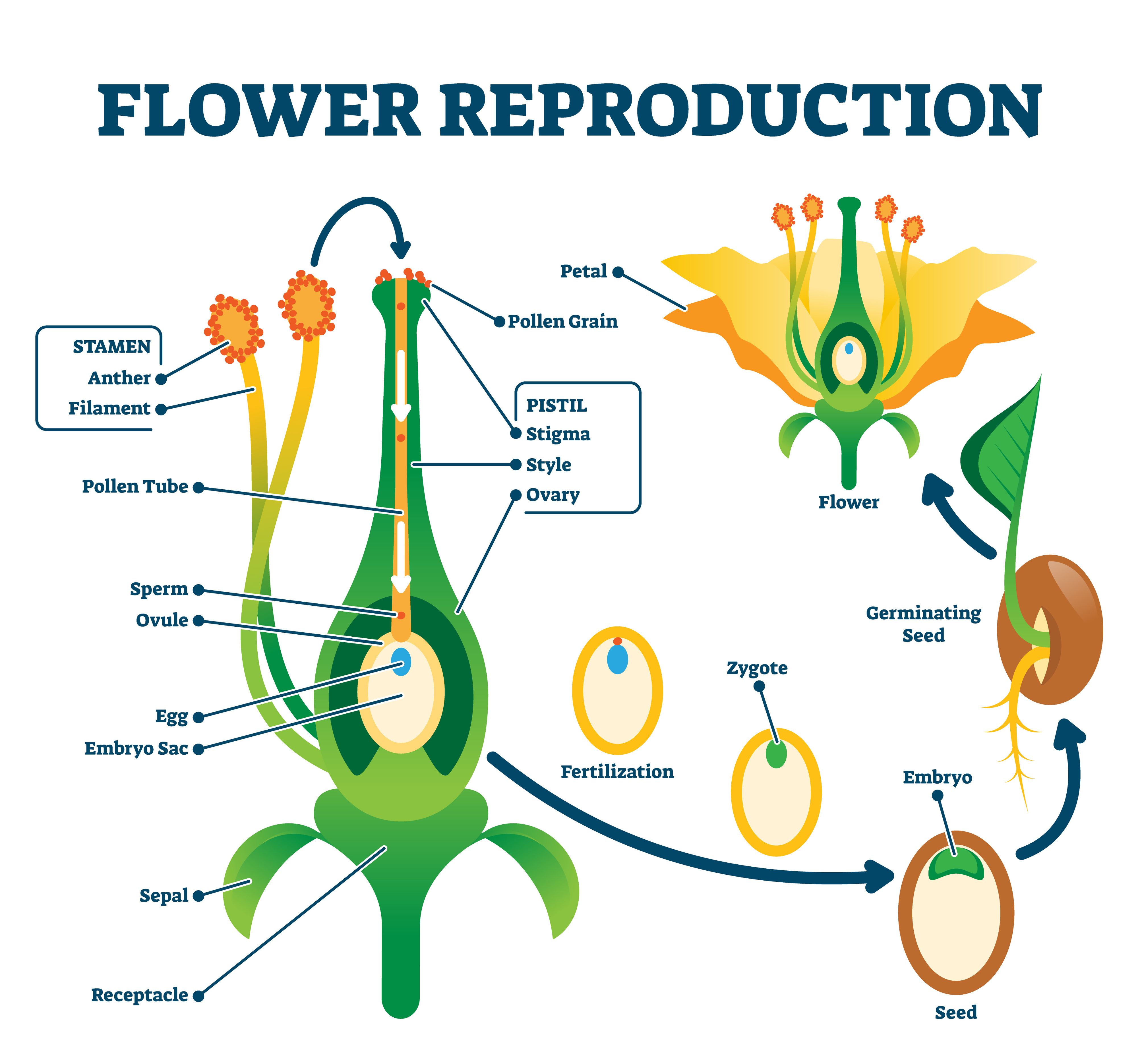Indoor gardening has so many benefits....being able to grow year-round, fewer pests, not having to have outdoor space to grow a bountiful garden, and many more. However, the one main limiting factor of indoor growing is plants not having access to the "work-horse" of outdoor gardens....pollinators.
How does pollination work exactly?
Pollination is the transfer of pollen from the Stamen (male flower part) to the Pistil (female flower part), in order for the plant to produce the amazing fruits and vegetables we know and love like strawberries, tomatoes, cucumbers, melons, and many more. Pollen is required for all flowers to produce fruits, + all fruits and vegetables (including spinach) to flower to produce seeds. There are two main types of pollination...Self-Pollination and Cross-Pollination. Self-pollinators are also called "complete" because they contain all the parts necessary for pollination...the Stamen, Pistil, Sepals and Petals (the latter two may also attract pollinators). Some examples of self pollinators are tomatoes and peppers. Plants like apples, strawberries and cucumbers require the transfer of pollen from the Anther of one flower into the Stigma of another flower, or "Cross-Pollination".

Whether a plant is self-pollinating, within the flower, or requires the pollen to be carried from one flower to another, pollinators, such as honeybees, play a crucial role. In fact...honeybees are the "most successful pollinators in the world (2)." So important that..."You have a bee to thank for every one in three bites of food you eat (3)." They are responsible for about 80% of pollination worldwide. However, bee pollination isn't the only way. Pollen can also be transferred or "shaken" for fertilization by animals, birds, insects, wind and more.
Why using honeybees, or other pollinators, isn't the best idea for indoor gardening
Bees actually get disoriented and even a little claustrophobic in confined spaces, leading them to bang themselves against walls...this is just a bad idea! And if you are not growing a variety of crops indoors (which you are able to with the Eden Tower;)), you will not be giving them all the nutrients they need from a variety of food sources (pollen). We wouldn't want to eat just tomatoes and peppers the rest of our lives! There are methods for granting bees access, for, say, a greenhouse situation, or the ever-spinning wheels of our imagination at Eden to move the towers (on wheels) outside for part of the day (check out our CEO and COO/CTO chatting about it here...25:50 min in). However, the easiest and safest method, for you and the bees;), is going to be manual pollution.
How do you pollinate indoors?
With the Eden Grow Tower, we rely on two primary methods for pollination...wind (fans) and manual pollination using a pollination tool (or electric toothbrush) to release pollen for fertilization for self pollinators, like tomatoes, and to transfer pollen for non-self pollinators, like strawberries. Why this works so well is that bees' wings beat thousands of times per minute, producing a vibration that creates a shockwave that releases the pollen. This can also be achieved by using a cotton swab, manually shaking the plant to allow the pollen to drop, using a paintbrush, or your fingers. However, the electric toothbrush is the best replicator of those speedy bee wings, producing 100% pollination in some cases (check out this awesome how-to video by MIgardener).
Whether you are growing indoors or out, these methods are a fantastic way to increase fruit yield. However, if growing indoors, these manual pollination methods are absolutely vital in order to produce the bountiful harvest these plants were designed to produce!
If you would like more information on the in's and out's of The Eden Grow Tower, head here.
Until next time, happy growing!
Sources:
1. Pollination | Mississippi State University Extension Service (msstate.edu)
2. Pollinating Fruit Crops | MU Extension (missouri.edu)
3. Role Of Honey Bees In Ecosystem Pollination - UCNRS
4. Save the Bees - Greenpeace USA
5. Pollination of Vegetable Crops | UGA Cooperative Extension
6. Types of Pollination- Self and Cross Pollination in Plants (byjus.com)
7. Pollination Basics | (adelphiacre.org)
8. Self-Pollinating Vegetables - Harvest to Table
9. How to hand pollinate strawberry plants for more fruits! (thethriftyislandgirl.com)